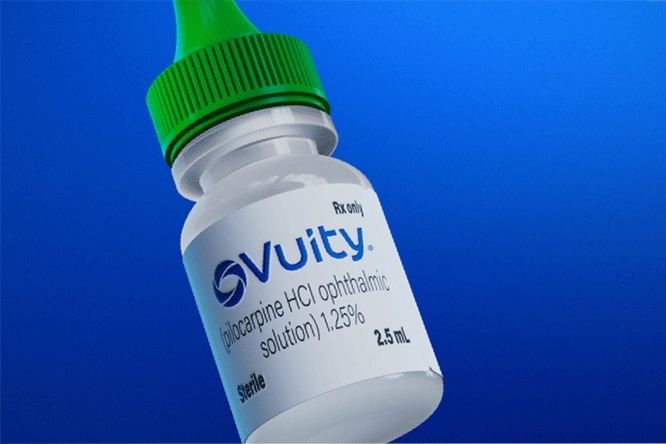
Major Depressive Disorder (MDD) is a complex psychiatric condition characterized by persistent low mood, anhedonia, and a range of cognitive, behavioral, and physical symptoms. Its diagnosis and management demand a systematic approach that integrates clinical expertise with patient-specific factors. For a newly diagnosed case, initiating pharmacotherapy is a critical step, often undertaken in conjunction with psychotherapy, to alleviate symptoms, restore function, and prevent recurrence.
Confirming the Diagnosis and Comprehensive Initial Assessment
Before any prescription can be considered, an accurate and thorough diagnosis is paramount. This involves:
- Diagnostic Confirmation: Utilize the Diagnostic and Statistical Manual of Mental Disorders, Fifth Edition (DSM-5) criteria for MDD. This requires the presence of at least five specific symptoms (including depressed mood or anhedonia) for most of the day, nearly every day, for at least two consecutive weeks, causing clinically significant distress or impairment in social, occupational, or other important areas of functioning.
- Differential Diagnosis: Rule out other conditions that can mimic depression, such as medical illnesses (e.g., hypothyroidism, anemia, vitamin deficiencies, neurological disorders), substance-induced mood disorders, medication side effects, or other psychiatric disorders (e.g., bipolar disorder, adjustment disorder). A thorough medical history, physical examination, and selective laboratory tests are crucial.
- Severity Assessment: Quantify the depression severity using standardized rating scales like the Patient Health Questionnaire-9 (PHQ-9) or the Hamilton Depression Rating Scale (HDRS). This helps guide treatment intensity and track progress.
- Psychosocial Assessment: Understand the patient’s current life stressors, social support systems, occupational status, and family history of mental illness. Identify any co-occurring psychiatric conditions (e.g., anxiety disorders, substance use disorders, personality disorders), as these significantly influence treatment choice and outcome.
- Risk Assessment: Critically evaluate for suicidal ideation, intent, and plan. This is a non-negotiable step; any immediate risk necessitates urgent intervention. Also, assess for self-harm behaviors.
Key Takeaway: A precise diagnosis and comprehensive understanding of the patient’s individual context are the bedrock upon which effective treatment is built.
Engaging in Shared Decision-Making and Setting Realistic Expectations
Once the diagnosis is established, the next crucial step is to engage the patient in a collaborative discussion about treatment options. This is a process of shared decision-making:
- Discuss Treatment Modalities: Explain the roles of pharmacotherapy, psychotherapy (e.g., Cognitive Behavioral Therapy, Interpersonal Therapy), and lifestyle modifications (e.g., exercise, sleep hygiene, nutrition). Emphasize that combination therapy (medication + therapy) is often more effective than either alone, especially for moderate to severe depression.
- Patient Preferences and Values: Elicit the patient’s views, concerns, prior experiences with mental health treatment, and any cultural or personal beliefs about medication. Their active involvement significantly improves adherence and outcomes.
- Setting Realistic Expectations:
- Onset of Action: Patients must understand that antidepressants do not work immediately. Initial symptomatic improvement may take 2-4 weeks, with full therapeutic effects often requiring 6-12 weeks.
- Not a “Cure”: Explain that medication helps manage symptoms but typically doesn’t “cure” depression and may need to be taken long-term to prevent relapse.
- Side Effects: Discuss common potential side effects upfront, how they are managed, and when they typically resolve. This proactive approach reduces anxiety and improves tolerability.
- Adherence: Stress the importance of taking medication consistently as prescribed, even when feeling better, and not to stop abruptly.
Key Takeaway: Informed consent and patient buy-in are essential for successful treatment.
Selecting the Initial Antidepressant Agent
Choosing the right antidepressant involves weighing efficacy, tolerability, safety, and individual patient characteristics.
- First-Line Agents:
- Selective Serotonin Reuptake Inhibitors (SSRIs): Generally considered first-line due to their favorable efficacy, relatively benign side-effect profile, and broad applicability. They work by increasing serotonin levels in the brain.
- Examples: Escitalopram (Lexapro), Sertraline (Zoloft), Fluoxetine (Prozac), Paroxetine (Paxil), Citalopram (Celexa).
- Advantages: Good tolerability, generally safe in overdose compared to older antidepressants, effective for comorbid anxiety.
- Common Side Effects: Gastrointestinal upset (nausea, diarrhea), sexual dysfunction (decreased libido, anorgasmia), insomnia or sedation, headache.
- Serotonin-Norepinephrine Reuptake Inhibitors (SNRIs): Often considered if SSRIs are ineffective or if the patient has prominent symptoms like significant fatigue, anhedonia, or comorbid chronic pain conditions. They increase both serotonin and norepinephrine.
- Examples: Venlafaxine (Effexor), Duloxetine (Cymbalta).
- Advantages: Effective for severe depression, comorbid pain syndromes (duloxetine), and some anxiety disorders.
- Common Side Effects: Similar to SSRIs, but can also include increased blood pressure and heart rate (especially venlafaxine), sweating, and urinary retention.
- Selective Serotonin Reuptake Inhibitors (SSRIs): Generally considered first-line due to their favorable efficacy, relatively benign side-effect profile, and broad applicability. They work by increasing serotonin levels in the brain.
- Factors Guiding Agent Selection:
- Symptom Profile:
- Prominent Anxiety/Insomnia: Paroxetine or escitalopram might be considered (more sedating). Mirtazapine (Remeron), an atypical antidepressant, is also sedating and appetite-stimulating.
- Apathy/Low Energy/Anhedonia: Bupropion (Wellbutrin), an atypical antidepressant, which primarily affects dopamine and norepinephrine, might be beneficial as it is often more activating and has less sexual dysfunction.
- Comorbid Chronic Pain: Duloxetine or venlafaxine are often preferred.
- Comorbidities:
- Generalized Anxiety Disorder (GAD): Most SSRIs/SNRIs are effective.
- Obsessive-Compulsive Disorder (OCD): SSRIs (especially fluoxetine, sertraline, fluvoxamine) at higher doses.
- Eating Disorders: Fluoxetine for bulimia nervosa. Bupropion is contraindicated in anorexia nervosa and bulimia nervosa due to seizure risk.
- Tolerability and Side Effect Profile:
- Sexual Dysfunction: Bupropion has the lowest risk. Mirtazapine also has a lower risk.
- Weight Gain: Mirtazapine is associated with weight gain. Bupropion is often weight-neutral or can cause weight loss. SSRIs can vary.
- GI Upset: Generally managed by taking with food or starting at a lower dose.
- Sedation/Activation: Consider time of dosing. More activating drugs (fluoxetine, bupropion) in the morning; more sedating drugs (paroxetine, mirtazapine) at night.
- Potential Drug-Drug Interactions (DDIs): Thoroughly review all other medications the patient is taking (prescription, OTC, herbal supplements). Pay attention to the cytochrome P450 enzyme system, as many antidepressants are metabolized by or inhibit/induce these enzymes, affecting drug levels. For example, paroxetine is a strong CYP2D6 inhibitor.
- Patient History/Family History: If a first-degree relative responded well to a specific antidepressant, it might be a reasonable starting choice, accounting for shared genetic predispositions. Similarly, if the patient has had a past successful trial, consider restarting that agent.
- Cost and Access: Consider generic availability and insurance coverage.
- Symptom Profile:
Key Takeaway: The initial choice is often an SSRI, but individualizing the choice based on symptom presentation, comorbidities, and potential side effects is paramount.
Formulating the Prescription Details – Dosage and Titration Strategy
The actual written prescription must be clear, complete, and adhere to appropriate dosing principles.
- “Start Low, Go Slow” (SLGS): This principle is crucial to minimize initial side effects and enhance patient tolerability and adherence.
- Initial Dose: Begin with the lowest effective therapeutic dose. For example, for escitalopram, start at 5 mg daily for the first week. For sertraline, 25 mg daily.
- Titration: Gradually increase the dose every 1-2 weeks, based on patient tolerability and clinical response, towards the usual therapeutic range. It typically takes several dose adjustments to reach an optimal dose. For instance, after a week on escitalopram 5 mg, increase to 10 mg daily. Further increases to 15 mg or 20 mg may follow if needed and tolerated.
- Therapeutic Dose Range: Most antidepressants have an established therapeutic dose range (e.g., escitalopram 10-20 mg/day, sertraline 50-200 mg/day). The goal is to reach a dose within this range that provides maximal benefit with minimal side effects.
- Maximum Dose: Be aware of the maximum recommended daily dose for each medication.
- Example Prescription (for Escitalopram):
[Your Clinic Name/Header] [Your Address, Phone Number] Date: October 26, 2023 Patient Name: Jane Doe DOB: 05/15/1990 Address: 123 Main St, Anytown, USA Rx: Escitalopram 5 mg tablets Dispense: 30 tablets Directions: Take ONE (1) tablet by mouth once daily for 7 days. Then, take TWO (2) tablets (10 mg total) by mouth once daily thereafter. Refills: 5 (or per clinic policy, e.g., 1-year supply) [Your Signature] [Your Printed Name, Title] DEA #: [Your DEA Number] NPI #: [Your NPI Number] *Notes/Instructions for pharmacist (if any):* Do not substitute without physician's permission if specific brand is desired for legitimate clinical reasons, otherwise generic is preferred.
Key Takeaway: Precise dosing instructions, including a titration schedule, are vital for safe and effective initiation of therapy.
Counseling on Treatment Duration and Expected Timeline
Patients need a clear understanding of the anticipated duration of treatment to manage expectations and ensure adherence.
- Acute Phase (6-12 weeks): The initial period aims to achieve symptom remission. During this time, doses are adjusted until symptoms significantly improve.
- Continuation Phase (4-9 months): Once remission is achieved, patients should continue the antidepressant at the full therapeutic dose for at least 4-9 months to prevent relapse. Discontinuation during this phase carries a high risk of relapse.
- Maintenance Phase (12+ months): For patients with recurrent episodes, chronic depression, severe episodes, significant residual symptoms, or other risk factors for relapse, maintenance treatment (often 1-2 years or longer, potentially indefinitely) is recommended to prevent future episodes.
- Discontinuation: Emphasize that antidepressants should never be stopped abruptly. Gradual tapering under medical supervision is necessary to prevent discontinuation syndrome, which can include symptoms like dizziness, nausea, headache, tremor, anxiety, and sensory disturbances (e.g., “brain zaps”).
Key Takeaway: Antidepressant treatment is a long-term commitment, and patients must be prepared for the various phases of therapy.
Monitoring, Safety Considerations, and Adjunctive Strategies
Ongoing monitoring and addressing safety concerns are integral to the treatment plan.
- Regular Follow-up:
- Initial: Schedule follow-up visits frequently (e.g., weekly for the first 2-4 weeks, then bi-weekly or monthly) to assess symptom response, monitor for side effects, adherence, and suicidal ideation.
- Ongoing: Once stable, visits can be less frequent, but regular check-ins are still necessary.
- Monitoring Efficacy: Use symptom rating scales (e.g., PHQ-9) at each visit to objectively track progress. Inquire about functional improvement in daily life.
- Monitoring Side Effects: Actively ask about specific and common side effects (GI upset, sexual dysfunction, sleep changes, weight changes). Provide strategies for management or consider dose adjustment/switch if severe.
- Black Box Warning – Suicidality: Patients, especially children, adolescents, and young adults (up to age 24), should be closely monitored for worsening depression, emergent suicidality, or unusual changes in behavior, particularly during the initial phase of treatment or dose changes. Families/caregivers should also be educated on these risks.
- Serotonin Syndrome: Educate about the rare but potentially life-threatening risk of Serotonin Syndrome, especially if other serotonergic drugs (e.g., triptans, tramadol, St. John’s Wort) are concurrently used. Symptoms include agitation, confusion, diaphoresis, hyperthermia, tachycardia, and myoclonus.
- Important Side Effects to Highlight:
- Sexual Dysfunction: Common with SSRIs/SNRIs; discuss openly and consider strategies like dose reduction, switching to bupropion, or adding a phosphodiesterase-5 inhibitor.
- Weight Changes: Monitor weight, counsel on diet and exercise.
- Sleep Disturbances: Adjust dosing time or consider adjunctive medication for sleep if severe.
- Lifestyle Modifications: Reinforce the importance of healthy habits:
- Exercise: Regular physical activity has antidepressant effects.
- Sleep Hygiene: Consistent sleep schedule, avoiding screens before bed.
- Nutrition: A balanced diet supportive of overall health.
- Mindfulness/Stress Reduction: Techniques to manage daily stressors.
- Psychotherapy: Strongly encourage engagement in psychotherapy. CBT, IPT, and psychodynamic therapy have strong evidence bases for depression and can provide coping skills, address underlying issues, and improve long-term outcomes, often synergizing with medication.
- Crisis Plan: Ensure the patient knows who to contact in case of worsening symptoms, severe side effects, or suicidal thoughts (e.g., crisis lines, emergency services, specific clinic contacts).
Key Takeaway: Continuous monitoring, proactive side effect management, and integrating adjunctive therapies are crucial for holistic care and sustained remission.
Conclusion
Formulating a prescription for a newly diagnosed case of depression is far more intricate than simply selecting a drug. It demands a thorough diagnostic process, a deep understanding of psychopharmacology, careful patient-provider collaboration, and meticulous planning for dosage, duration, and monitoring. By adhering to this step-by-step approach, healthcare professionals can optimize the chances of successful treatment, improve patient well-being, and mitigate potential risks, ultimately fostering a journey towards recovery and improved quality of life. The emphasis remains on individualizing care, recognizing that each patient’s experience with depression and response to treatment is unique.
References:
- American Psychiatric Association. (2013). Diagnostic and Statistical Manual of Mental Disorders (5th ed.). Arlington, VA: American Psychiatric Publishing.
- Bauer, M., Dalfen, A., Degroote, F., et al. (2020). The World Federation of Societies of Biological Psychiatry (WFSBP) guidelines for the biological treatment of unipolar depressive disorders, Part 1: Acute and continuation phase treatment of major depressive disorder – 2020 revision. The World Journal of Biological Psychiatry, 21(4), 263-301.
- Cleare, A., et al. (2021). The CANMAT 2021 Clinical Guidelines for the Management of Depression in Adults. Canadian Journal of Psychiatry, 66(Suppl 2).
- Rush, A. J., Trivedi, M. H., Wisniewski, S. R., et al. (2006). Acute and longer-term outcomes in depressed outpatients requiring one or several treatment steps: a STAR*D report. American Journal of Psychiatry, 163(11), 1905-1917.
- Stahl, S. M. (2013). Stahl’s Essential Psychopharmacology: Neuroscientific Basis and Practical Applications (4th ed.). Cambridge University Press.
- Wiebe, E. S. (2007). Comprehensive pharmacological management of depression. Canadian Medical Association Journal, 177(11), 1391-1399.







